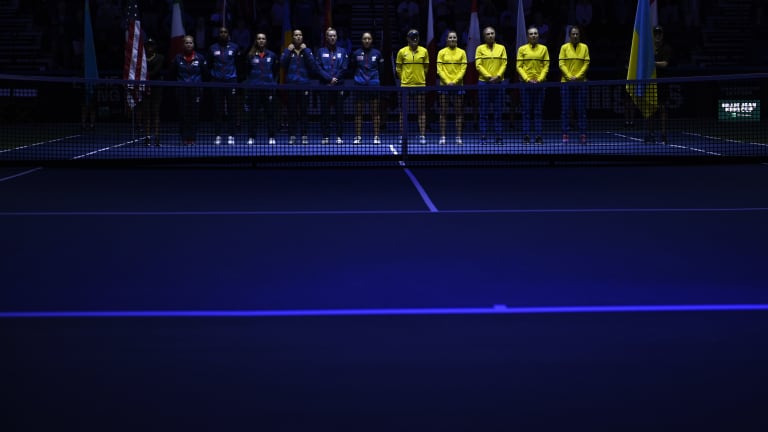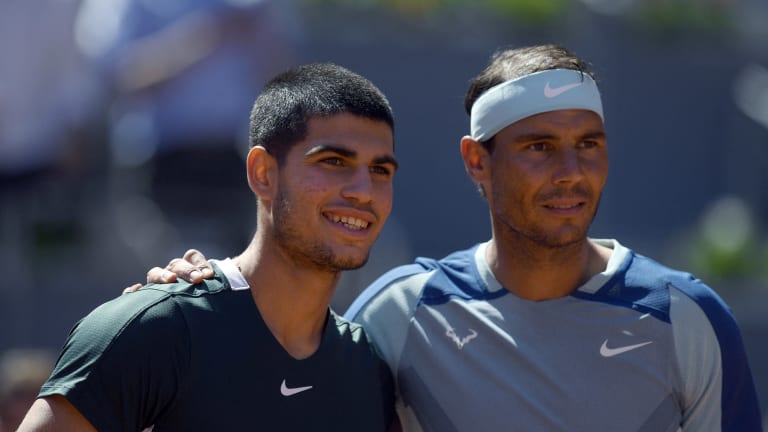US Open
In making a muscular show of support for Ukraine at the US Open, the USTA chooses a third way
By Aug 09, 2022US Open
Eric Butorac will replace Stacey Allaster as US Open tournament director
By Nov 17, 2025US Open
Beyond The Champions: 2025 US Open Winners and Losers
By Sep 10, 2025US Open
In US Open defeat, Jannik Sinner faces his shortcomings
By Sep 09, 2025US Open
Amanda Anisimova's US Open fortnight wasn't just "incredible"—it was redemptive
By Sep 09, 2025US Open
Overcoming Doubt, Finding Deliverance: Six WTA takeaways from the 2025 US Open
By Sep 08, 2025US Open
Service and a smile: How Carlos Alcaraz conquered Jannik Sinner at the 2025 US Open
By Sep 08, 2025US Open
Carlos Alcaraz captures sixth Slam and second US Open title, dethrones No. 1 Jannik Sinner
By Sep 07, 2025US Open
Alcaraz vs. Sinner US Open final start delayed by 30 minutes
By Sep 07, 2025US Open
Blinding Lights: Amanda Anisimova rues missed opportunities, serve woes after US Open final
By Sep 07, 2025In making a muscular show of support for Ukraine at the US Open, the USTA chooses a third way
A spotlight on Ukraine may make some players uncomfortable, but if it shocks them out of their complacency, it’s a win
Published Aug 09, 2022
Advertising
Advertising
Advertising

This year's Billie Jean King Cup tie between the United States and Ukraine, in Asheville, N.C., was a show of support for the war-torn nation. This year's US Open, at the USTA Billie Jean King National Tennis Center, promises to be another.
© Eakin Howard
Advertising
Advertising

Carlos Alcaraz and Rafael Nadal have said that they'll participate in a pre-tournament exhibition to help raise funds for Ukraine's cause. It remains to be seen if any Russian or Belarusian players—who will be allowed to compete in the US Open—will join them.
© AFP via Getty Images